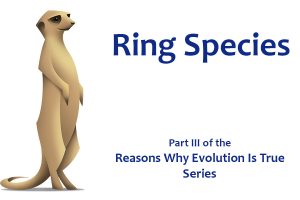The Evolution of the Sexes
Women are from Venus, men are from Mars. Countless films, books, plays and poems have focused on this hyperbole. But why are men and women different? What is the origin of the differences between the sexes?

Women are from Venus, men are from Mars. Countless films, books, plays and poems have focused on this hyperbole. But why are men and women different? What is the origin of the differences between the sexes?

The mammalian eye, a refractive cornea non-compound eye, to be precise, is a wonderful example of the bizarre quirks of evolution that we see in nature. These are only really bizarre, of course, from the view-point of intelligent design.
Our visual system is made up of many tiny light receptors on our retina known as rods and cones. Each receptor picks up a small portion of light and relays the message to our brain via nerve connections in the optic nerve. Information from thousands of light receptors is pieced together by the brain to form an image of the world around us. The rest of the eye is designed to focus light onto the retina in the most efficient way possible. Logically, you would expect, therefore, that the eye would be designedso that nothing blocked light from reaching the retina. And yet, in the mammalian eye, the nerves and blood vessels connecting to the rods and cones protrude outwards in front of them. In order to connect back to the brain, the nerve fibres must then break through the wall of light receptors, creating a blind spot where they join the optic nerve.
Continue reading
For most biologists and reasonable people, evolution is FACT. In as much as gravity could be said to be fact. However, for those who deny the existence of evolution, the difficulty of observing its occurrence in real time is proof enough that it doesn’t exist. There are a few key examples of evolution in action, however, and during these short essays I have been detailing some of them. One of the most famous examples is that of the Galapagos Finches, which inspired Darwin as he formulated his ground-breaking theory.
Continue reading
One common argument proposed against evolution is that we cannot see speciation in action, and thus cannot know for certain that it happens. To say that this claim is false is an understatement. Artificial selection, both in terms of the range of domestic species produced by humans over the last 10,000 years, and artificially selected laboratory populations of bacteria, insects and small mammals, certainly go a long way to prove that natural selection and speciation are possible. But does it occur in nature?
Continue reading
Parasitoid wasps are a little known, but extremely prolific group of wasps, who provide one of the best examples of evidence for evolution that I’ve come across. Parasitoid wasps have a particularly gruesome way of life. They make a living by laying their eggs inside the larvae of another insect, often a caterpillar. As the young wasp develops, it devours the host from the inside out, eventually emerging and killing the host.
Parasitoid wasps are found in 37 different families of a single order, the Hymenoptera, which contains all bees, wasps and ants. There are thousands, maybe even millions of species of parasitoid wasp, each preying on a different host, utilising a different set of tactics to subdue their victim. Many parasitoid wasps are considered to be beneficial to humans because they kill garden pests such as aphids. But this is not the important part of the story.
Continue reading
Pandas are crap. They might be cute, cuddly and charismatic, but the simple fact is that they’re really pretty rubbish at being pandas. You might think that being good at being a panda would be a fairly important trait for a panda to possess, but sadly these beautiful animals are victims of evolutionary history. Giant pandas are members of the bear family, and they evolved from a common ancestor with other bears during the late Pleistocene, approximately 600,000 years ago. Bears are members of the Ursidae family, within the order Carnivora, and as the name suggests, almost all bears are meat-eaters. That is, except the panda. Bears have evolved a club-like paw, with limited independent movement of their digits, which is excellent for attacking live prey. Pandas, having evolved from a carnivorous, bear-like ancestor, share this adaptation, despite no longer eating meat. Bamboo is particularly difficult to grasp without a thumb. And Pandas need to consume an awful lot of bamboo to survive: about 40kg every day.
Continue readingWhile most animals will try to avoid freezing at all costs, some species of frog are actively encouraging it.
The wood frog (Rana sylvatica) is one of a handful of freeze-tolerant animals with adaptations to cope with freezing for up for 4 weeks. And within hours of defrosting the frogs are back to their usual selves again.
Reproduction takes two… right? This is true for most animal species, with reproduction involving the fusion of a sperm and an egg. However, one fish species has taken a different approach. The Amazon Molly is entirely female. When they are ready to reproduce, members of this species must find a male of another, related species, and mate with him. However, instead of using the sperm from this male to provide half of the genetic information for the future offspring, the female Amazon Molly merely uses the sperm as a signal to trigger embryogenesis, in a process known as gynogenesis.